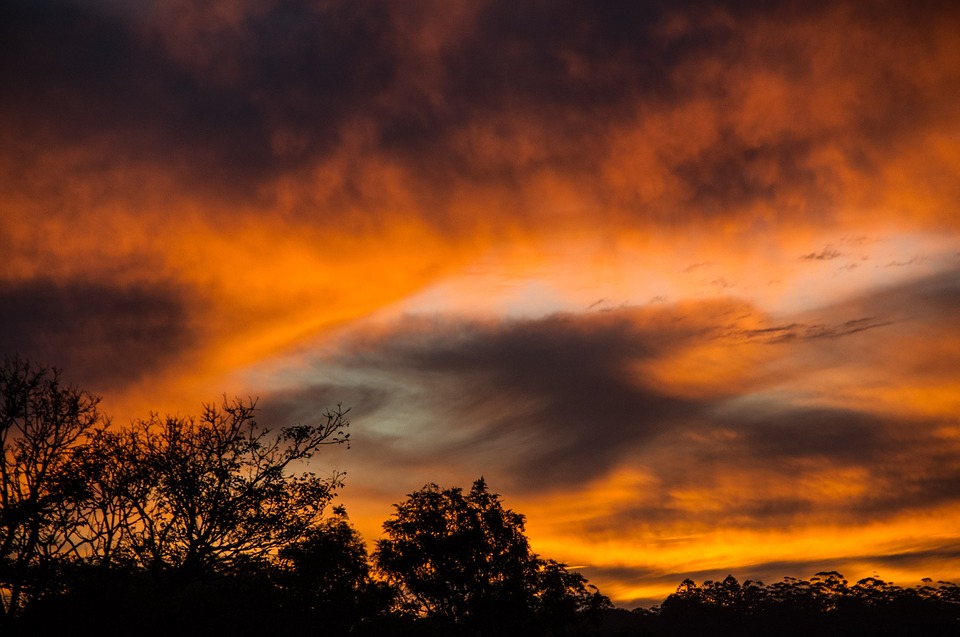The Australian wildfires have been going on for several months, causing destruction in many parts of the continent. Recently, NASA released some satellite photos indicating just how much destruction the fires are causing, including Kangaroo Island.
Kangaroo Island is a popular tourist attraction that has unfortunately fallen victim to the bushfires that have been going on. NASA’s latest satellite images have managed to capture the havoc the fires have wreaked upon the land, endangering the wildlife that resides within the land, and destroying homes of many. As Kangaroo Island is home to many already-endangered species of birds, the fires have further endangered these said species, such as the glossy black-cockatoos that have only been brought back from near-extinction.
The space agency’s satellite photos from the 16th of December and the 7th of January show the vast contrast of Kangaroo Island. In December, the tourist attraction was still vividly green, but come January, a third of the island was now scorched, with the fires still blazing on. The bushfires were started by lightning strikes and local authorities have been working tirelessly to put out the fires that continue to come up. NASA said that the bushfires are an ecological disaster, and scientists within the vicinity of the affected areas estimate that about 25,000 koalas were among the fatalities brought on by the fire.
While New South Wales and Victoria have experienced some rainfall, the relief would only be temporary and the fires are likely going to start again. The local authorities have also predicted that the blaze will continue on for another month due to the strength of the fires. NASA’s other satellite images of the country show how much smoke has appeared due to the fires. Even the white clouds in the photos may have formed because of the fires as well, said the space agency.
To make matters worse, summer is just beginning in Australia, meaning the temperature has yet to reach its peak come February. With the increasing temperatures, there is a big chance that the blaze will worsen or grow even bigger, affecting more parts of Australia as it goes on.



 NASA Astronauts Wilmore and Williams Recover After Boeing Starliner Delay
NASA Astronauts Wilmore and Williams Recover After Boeing Starliner Delay  FDA Adds Fatal Risk Warning to J&J and Legend Biotech’s Carvykti Cancer Therapy
FDA Adds Fatal Risk Warning to J&J and Legend Biotech’s Carvykti Cancer Therapy  Neuralink Expands Brain Implant Trials with 12 Global Patients
Neuralink Expands Brain Implant Trials with 12 Global Patients  NASA and Roscosmos Chiefs Meet in Florida to Discuss Moon and ISS Cooperation
NASA and Roscosmos Chiefs Meet in Florida to Discuss Moon and ISS Cooperation  SpaceX’s Starship Completes 11th Test Flight, Paving Way for Moon and Mars Missions
SpaceX’s Starship Completes 11th Test Flight, Paving Way for Moon and Mars Missions  Trump Administration to Launch Autism Initiatives Targeting Acetaminophen Use and New Treatment Options
Trump Administration to Launch Autism Initiatives Targeting Acetaminophen Use and New Treatment Options  Lab-grown meat: you may find it icky, but it could drive forward medical research
Lab-grown meat: you may find it icky, but it could drive forward medical research  Is space worth the cost? Accounting experts say its value can’t be found in spreadsheets
Is space worth the cost? Accounting experts say its value can’t be found in spreadsheets  SpaceX Starship Test Flight Reaches New Heights but Ends in Setback
SpaceX Starship Test Flight Reaches New Heights but Ends in Setback  Trump and Merck KGaA Partner to Slash IVF Drug Costs and Expand Fertility Coverage
Trump and Merck KGaA Partner to Slash IVF Drug Costs and Expand Fertility Coverage  Astronomers have discovered another puzzling interstellar object − this third one is big, bright and fast
Astronomers have discovered another puzzling interstellar object − this third one is big, bright and fast  Ancient Mars may have had a carbon cycle − a new study suggests the red planet may have once been warmer, wetter and more favorable for life
Ancient Mars may have had a carbon cycle − a new study suggests the red planet may have once been warmer, wetter and more favorable for life 































